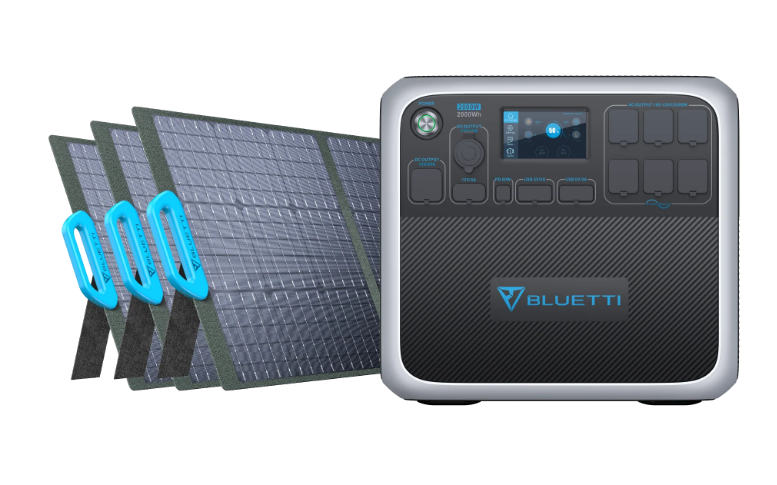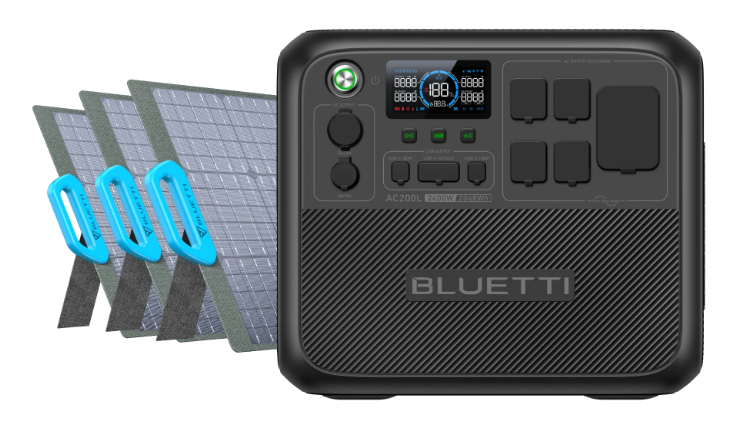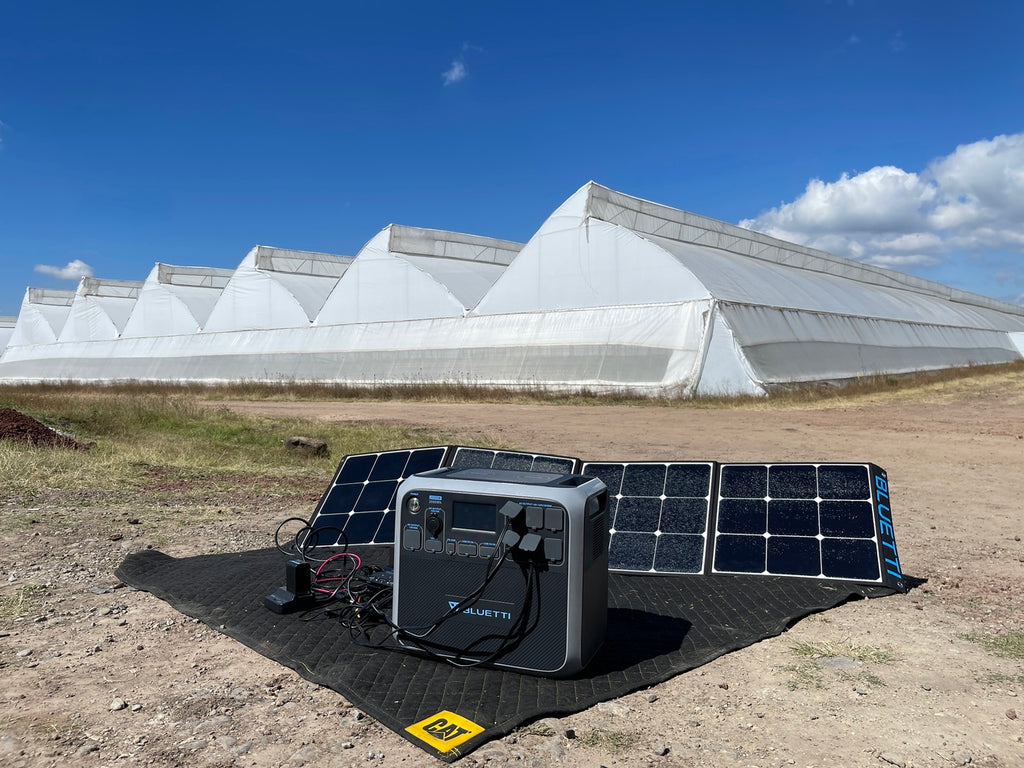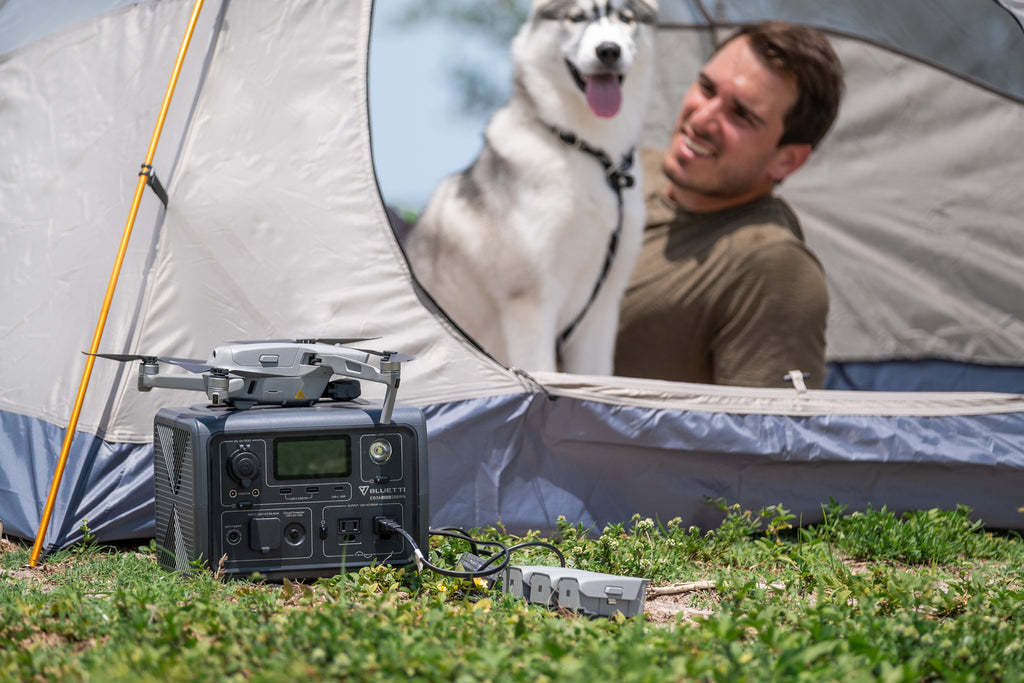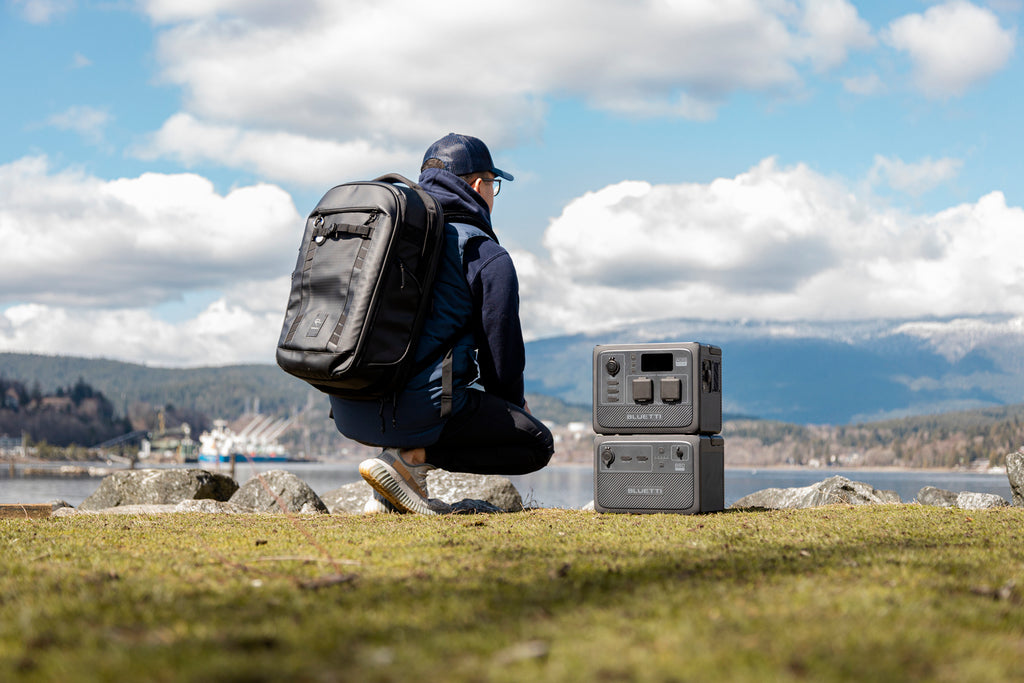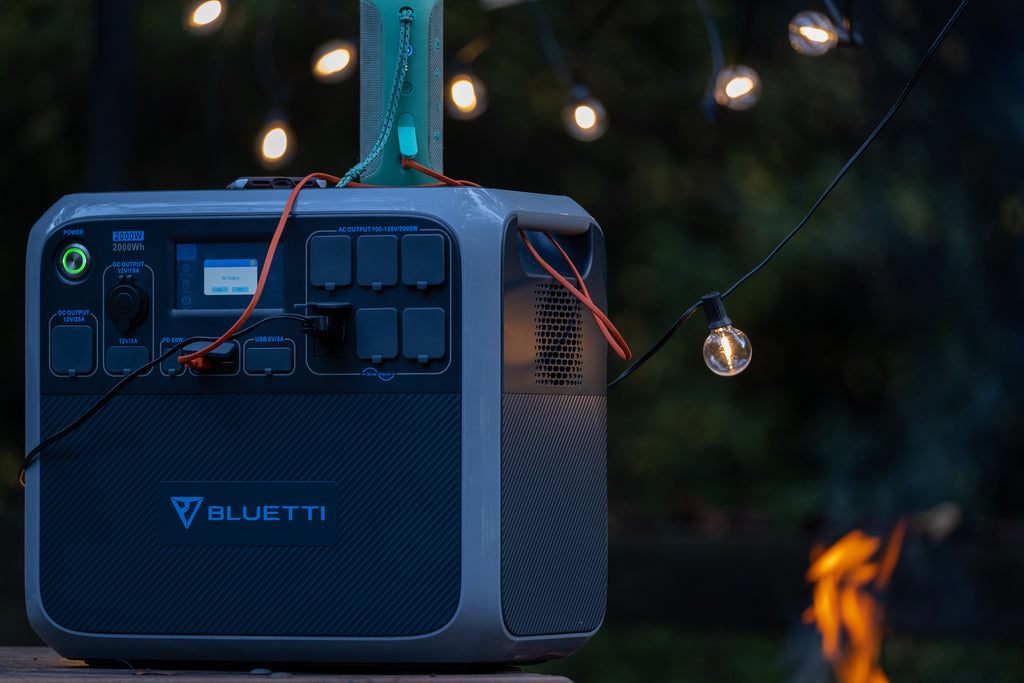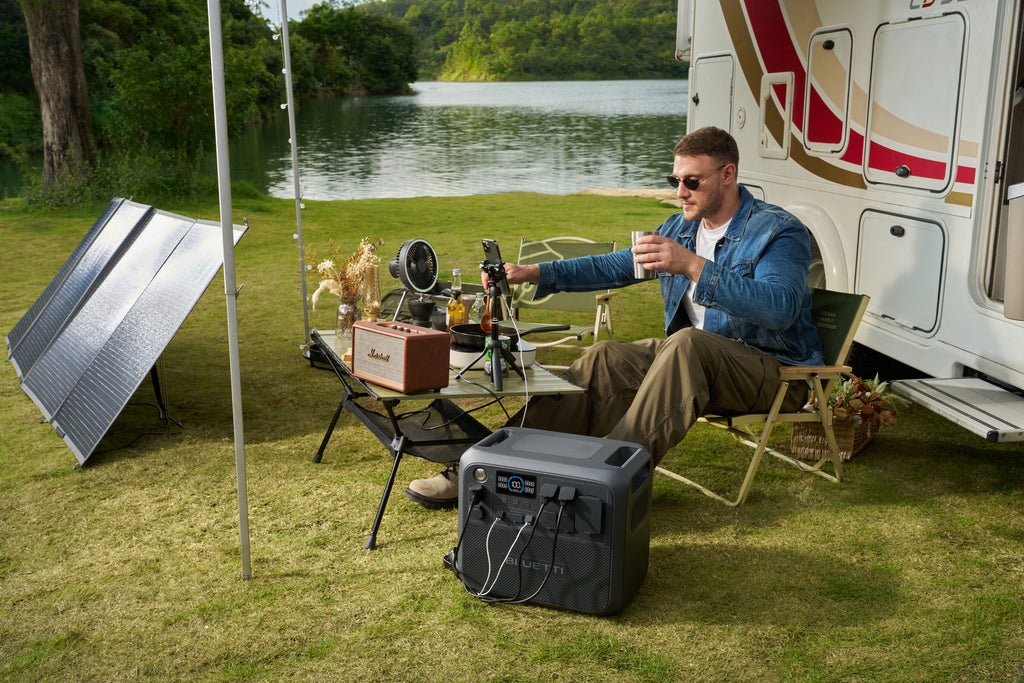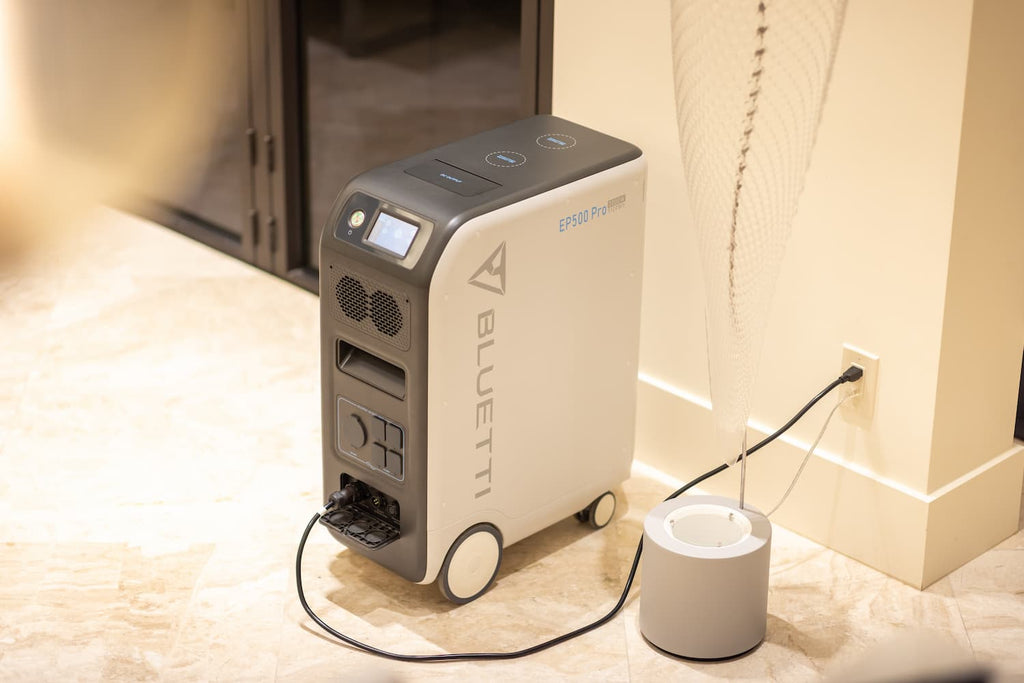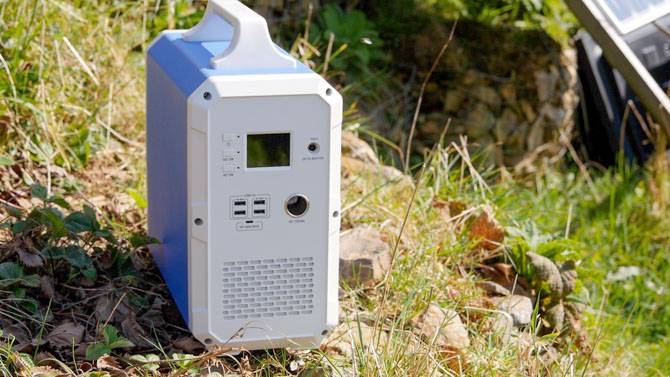However, before venturing out to purchase one, you need to keep in mind several factors to obtain the right generator, especially if you are buying one for your apartment. Read on as we explore all these essentials.

Understanding Your Power Needs
First things first: you need to estimate and understand the power needs of your apartment. Obviously, your generator will run all your electrical devices in the case of a power outage. So, be very clear about the power requirements of all your household appliances.
1. Apartment Appliances
Firstly, list down the power ratings of all your apartment appliances, including refrigerator, lights, air conditioner, coffee maker, and even your laptop. All your essential and other appliances that run on electricity need to be listed down.
Writing down their power consumption will provide you with a guideline on the power required by each of those appliances.
2. Essential vs. Luxury Needs
Now that you have all your electrical appliances and their power consumption jotted down, divide them according to your priorities. In the case of a power outage, which devices will you require, and which appliances can you do without?
Will you definitely be needing your laptop or a light source? Would you prefer having power in your refrigerator and microwave oven for your food? Do you think you won’t need an air conditioner during the power outage?
According to your priorities, separate the appliances whose power you will definitely need during a power outage. Calculate their total power combined because those are the appliances you will be powering through the generator. You will be purchasing a generator for the apartment based on this total power requirement.
3. Runtime and Fuel Efficiency
The next thing to consider is the runtime of your electrical devices and the corresponding fuel efficiency of the generator for the apartment you intend to purchase. How long does the power outage in your apartment last? Will the devices run for the whole duration of the power outage or for a limited amount of time?
According to your requirements, you will consider the tank size and fuel efficiency (the estimation of how long a single refill lasts) of the generator for the apartment. A Smaller generator for apartment might require more frequent refills, whereas larger generators may end up offering a lot more fuel than your requirements.
So, keep these factors in mind when choosing a generator for an apartment.
Apartment-Friendly Generators
There are three types of generators for apartments that you can choose from.
1. Portable Gas Generators
As its name suggests, a portable gas generator for apartments is portable. Additionally, it promises an efficient power output, along with being affordable.
However, gas generators produce loud noises and unpleasant emissions while they are running, making them a less-than-ideal solution for closed spaces like apartments. You will also need to carefully plan their refueling and fuel storage.
2. Solar Generators

A solar generator for apartment eliminates all your worries that arise in a gas generator. Solar generators recharge from the Sun and thus are environmentally friendly, quiet, and have no fuel concerns.
Yet, their reliance on the Sun renders them non-workable when the Sun is not available or in cloudy weather. Secondly, while they have a lower maintenance cost, their initial cost is high.
3. Inverter Generators
An inverter generator is an ideal appliance for an apartment owing to its fuel efficiency, quiet operation, and suitability for sensitive electronics. They also produce cleaner energy, therefore making them suitable for powering your laptops, TVs, and medical equipment.
However, you will find that their capacity is lower than larger gas generators.
Factors to Consider When Choosing a Generator for Apartment
Now that we have considered the power requirements of your apartment and the types of apartment-friendly generators there are, it is time to look at the factors to keep in mind when purchasing the right-sized generator for apartment.
1. Power Output
Larger generators, no doubt, promise high wattages that can run multiple electrical devices simultaneously. They are ideal for larger homes or apartments where you need to run bigger appliances, such as washing machines and air conditioners, even during a power outage.
Of course, with bigger sizes and wattages comes larger fuel consumption and higher price tags.
Smaller generators, on the other hand, are more compact and budget-friendly. They are ideal for apartments where you only need to have some lights, a refrigerator, or some small appliances running in case of a power outage.
However, they have a limited wattage and may require you to refill the fuel more than once, depending on the duration of the power outage.
2. Noise Level
Larger generators have bigger engines; they produce a substantial amount of noise during operation. While it may not pose an issue for some people, noise-sensitive people would be disturbed by it. If your apartment is in a populated area, your neighbors might complain about its noise.
A smaller generator for apartment is on the quieter side and, thus, is more suitable for apartments. However, some small generators, such as gas-powered ones, tend to produce some level of noticeable noise, which can be heard in close proximity.
3. Portability
A larger generator for apartment will, undoubtedly, pose issues in terms of its portability. You will need to allot some space in your apartment for a bigger generator. You might also require some equipment like wheelbarrows or ramps.
Conversely, a smaller generator for apartment will be the epitome of a portable device. They are compact and lightweight. You can easily carry them around the apartment and place them anywhere you want without the need to allot a specific space for them.
4. Safety Features
You will observe better safety features in a larger generator for apartment. Safety features in a larger generator can include automatic shutdowns for oil pressure issues, overheating, or overload protection.
Yet you will also observe risks associated with larger generators, which you must avoid by strictly following the manufacturer’s guidelines.
A smaller generator for apartment, on the other hand, may not have these advanced safety features. Nonetheless, they do have basic ones that you would require according to your short-term usage.
You should also make sure to follow the manufacturer’s safety guidelines, even if it is for a smaller generator for apartment.
Find out the secret to choosing the best battery generator for home.
What Size Generator Do I Need for an Apartment?
The size of the generator you need for your apartment depends on your power needs and the equipment you want to run during a power outage. Do a rough calculation of the wattage of these devices to get the size generator you need.
BLUETTI Solutions for Apartment Power
When looking for a potential generator for an apartment, which brand to seek other than BLUETTI, whose remarkable solar products leave you in awe?
As mentioned above, solar generators are ideal for apartments due to their reliance on the Sun, so let’s check out some cool solar generator kits and other products from BLUETTI, shall we?
1. BLUETTI AC200MAX + 3*PV200 Solar Generator Kit

The BLUETTI AC200MAX + 3*PV200 Solar Generator Kit is a practical and sustainable choice for a generator for apartment. You will surely love its high capacity, multiple charging options, and smart features.
Key Features:
- Power: This solar generator kit has a 2,200W AC Pure Sine Wave Inverter, i.e., you are assured 2,200W of clean power. This high power output allows it to run multiple devices at the same time, even high-powered devices, such as washing machines. You will love its addition to your apartment.
- Capacity: With a 2,048Wh capacity, you are guaranteed a high amount of energy stored in its battery.
- Battery: The LiFePO4 battery offers over 3,500 life cycles until it reaches 80% of its original capacity, i.e., it is extremely durable - ideal for prolonged power outages.
- Versatile Recharging: It has seven rechargeable ways - AC (wall outlet), solar panels, car, generator, lead-acid battery, and combinations like Dual AC and AC+Solar. This feature makes it adaptable to different situations, whether you are in an apartment, on the road, or out camping.
- Solar Input: This solar generator for apartment is capable of 900W of solar input, making it an eco-friendly option. With this, you have no reason to worry about fuel storage and noise.
2. BLUETTI AC200P + 3*PV200S Solar Generator Kit
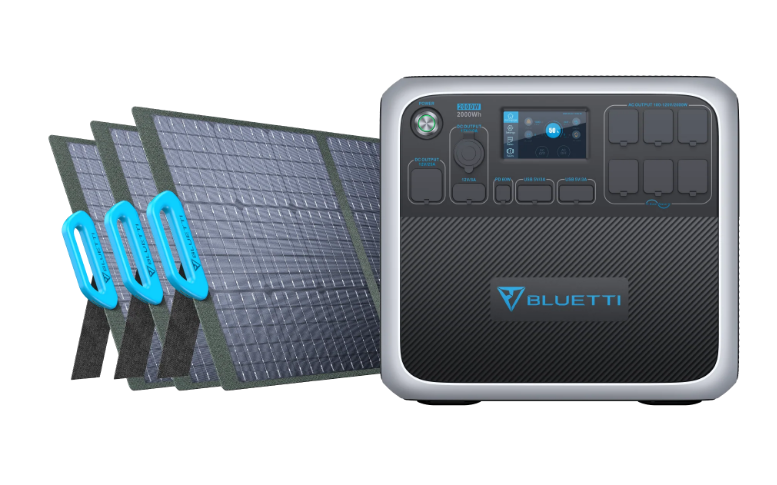
Yet another of BLUETTI’s solar generator for apartment, the BLUETTI AC200P + 3*PV200S Solar Generator Kit is a remarkable kit to have for its large capacity, fast charging, and numerous outputs.
Key Features:
- Power: It has a 2,000W AC Pure Sine Wave Inverter, promising you a 2,000W of power output. This much power can run even a whole house, let alone an apartment, during a power outage.
- Capacity: It has a storage capacity of 2,000Wh. What more could you want?
- Battery: Its LiFePO4 battery offers more than 3,500 life cycles until the capacity degrades to 80% of its original capacity. Longevity is assured.
- Fast Changing: You are assured 1,200W of fast dual charging, combining solar and AC adapter inputs for quicker recharge. Enticing, isn’t it?
- Multiple Ports: It has 17 output ports, allowing you to charge multiple devices simultaneously.
3. BLUETTI AC300 + 1*B300 Home Battery Backup

Besides BLUETTI’s solar generator for apartment, there are other exceptional products available as well. For one, the BLUETTI AC300 + 1*B300 Home Battery Backup is a reliable and substantial power backup.
Its high-capacity inverter, surge support, and the ability to expand storage capacity are features you will simply love.
Key Features:
- Power: It has a 3,000W AC Pure Sine Wave Inverter, i.e., it can provide steady and clean power up to 3,000W. It can, thus, run your whole apartment in case of a power outage.
- Surge Capability: This battery can handle up to 6,000W of surge. This is ideal for appliances that require a higher power input when they start up.
- Capacity: It offers 3,072Wh battery capacity, promising you 3,072Wh of stored energy.
- Expandability: You can expand this system up to 12,288Wh using up to four B300 expansion batteries. This significantly increases its power storage capacity. How cool is that!
- Special Feature: You can create a 240V connection by using two AC300 units and two B300 batteries. This allows you to power even heavy-duty appliances in your apartment.
Final Words
So, what are you waiting for? Measure the total power requirement of your apartment and set out to buy a generator that best fits your needs. While you are at it, opting for a solar generator for apartment is a great investment, especially if you choose one from BLUETTI.
]]>